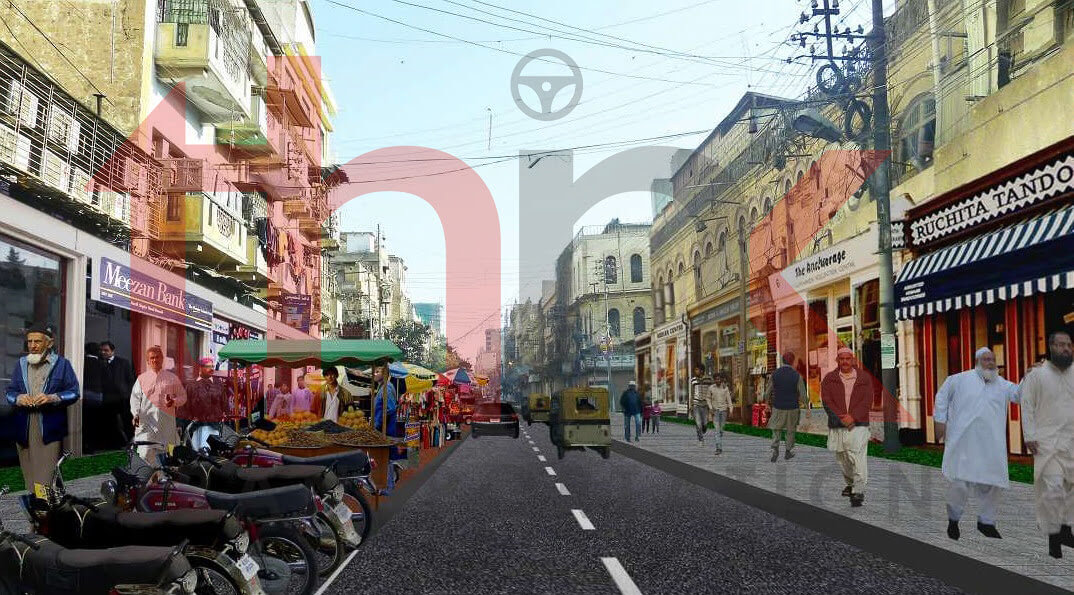
Non-Motorized Corridor Analysis of Saddar Town
Walking is the most familiar form of non-motorized transportation (NMT). Other common form of NMT include bicycles/tricycles; human porterage; handcarts/wheelbarrows; animal drawn carts; and other human powered vehicles. In fact, the definition of NMT includes any form of transportation that provides personal or goods mobility by methods other than the combustion motor.
In medium-sized cities in Japan, Germany and the Netherlands, 40-60 percent of all trips are made by walking and cycling, while in similarly sized cities in India this share is as high as 80 percent (Heierli, 1993). Almost all rural transport in Sub-Saharan Africa is non-motorized and dominated biony head- and back-carrying by women and children. In many Asian countries, non-motorized two- and three-wheelers are common sights, employing special adaptations to the vehicle for goods transport, hawking or passenger hire.
Though NMT users are the majority in many places, they are often neglected in the design and modernization of transportation infrastructure. For example, new construction and upgrading often does not provide physical infrastructure (e.g., overpasses or shoulders) for existing NMT users, sometimes resulting in higher NMT-automobile accident rates, longer travel times for NMT users, or even a complete elimination of NMT traffic. The result of this neglect is a transportation system that in many ways favors cars and other motorized traffic to the detriment of poorer segments of the population; thus consideration of NMT during infrastructure design is an essential
element to providing equitable transportation opportunities.
One of the advantages of NMT is that it provides a very flexible solution to accessibility, especially where resources are scarce. This is true not only from the user’s perspective; but local level service providers, policy-makers and opinion-leaders are also becoming increasingly aware of the viability of NMT. The following sections discuss issues related to the integration of NMT in the design of developing country infrastructure projects.
People are roaming the streets in Karachi. Pedestrian-related trips represent about 20 percent of 24.2 million person-trips taken in Karachi every day1. This number also includes people who use public transit since almost all public transit users are also pedestrian. With such a big percentage, availability of good NMT infrastructures are highly justified. Main objective of this is as follows;
Main focus of NMT improvement is pedestrian/passenger access along the BRT corridor Critical area in MA Jinnah Road is located at the busiest part, where main economic activities happen, in southern part with one-way traffic direction system. In this area, street vendor occupying sidewalk and street are the most common but also the biggest problem. The area of 500 m walking distance from BRT station. This is the catchment area of the BRT users. Ensuring good NMT infrastructure inside the study area is necessary for ensuring all potential BRT users are being served with good accessibility.